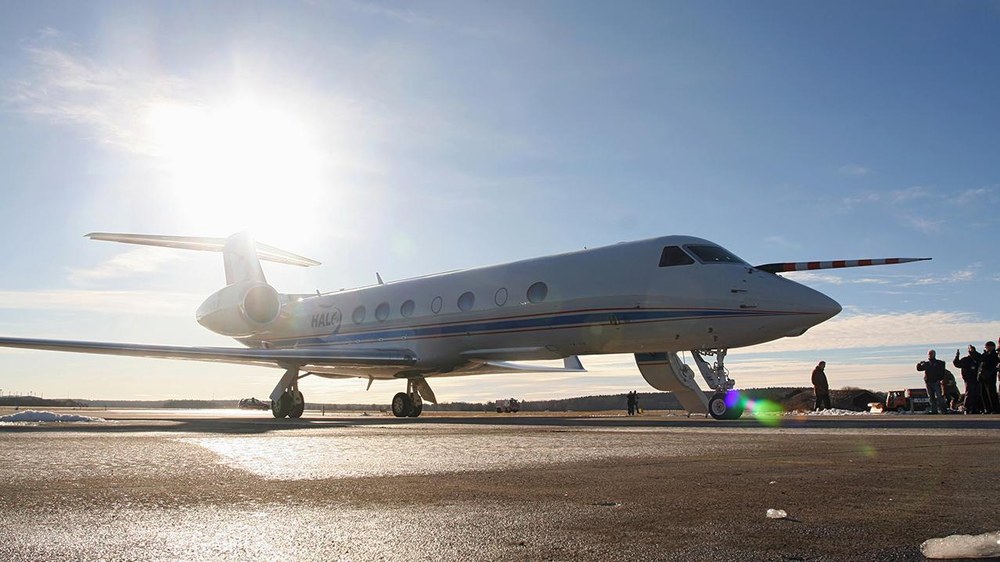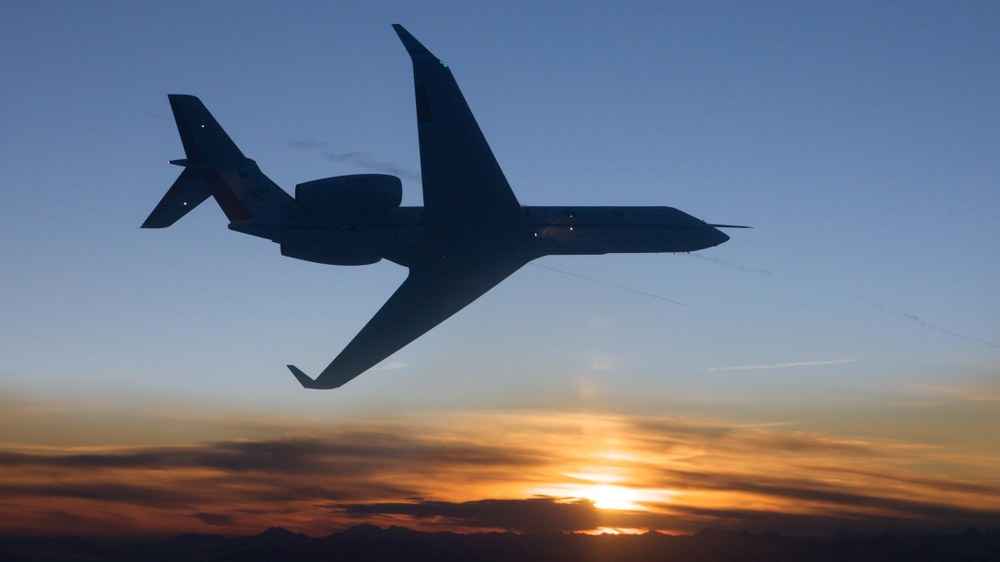From idea to project launch

The need for a high-altitude long-range research aircraft was first established in the 1980s. At that time, few aircraft for high altitude experiments were available in Europe; notable among them, DLR's Falcon 20-E. In the year 2000, representatives of major German research institutes in the atmospheric and climate research sectors came together to develop a concept for future atmospheric research using aircraft. The result was a unanimous vote for a high altitude aircraft with a long range and large payload capacity.
In 2001, the Max Planck Society and DLR, on behalf of over 30 research institutes in Germany, submitted a proposal for such an aircraft to the German Federal Ministry of Education and Research (Bundesministerium für Bildung und Forschung; BMBF). In the subsequent review of the project by a science council appointed by the German federal and state governments, HALO was categorised as worthy of unrestricted support. In the autumn of 2004, representatives of the BMBF, the Helmholtz Association of German Research Centres, the Max Planck Society, the Jülich Research Centre, the Karlsruhe Institute of Technology, DLR and the Free State of Bavaria agreed to jointly finance the construction of the HALO research aircraft. This opened the way for the delivery of HALO. In February 2005, DLR and the Gulfstream Aerospace Corporation signed a contract to jointly finance the construction of the HALO research aircraft.
The route to the first missions
HALO is based on the Gulfstream G550 ultra long-range business jet. With a range of well over 8000 kilometres, HALO is capable of taking measurements on a continental scale. Any region from the poles to the tropics and remote areas of the Pacific can be reached with this research aircraft. The maximum flight altitude of over 15 kilometres also enables measurements to be taken in the lower stratosphere, outside of the tropics. There are more than twice as many instruments on board HALO as in the DLR Falcon 20-E research aircraft, enabling a substantially more comprehensive investigation of complex atmospheric processes. In total, the payload mass is around three tons.
However, extensive reconstruction, modification, testing and flight tests were first needed to turn the business jet into a high-performance research aircraft. HALO's fuselage resembles Swiss cheese; there are numerous possible mounting positions for air inlets and outlets of the measurement instruments, as well as windows to allow for the use of remote sensing equipment from inside the cabin. A special power supply enables the use of equipment both inside and outside the cabin. Up to 15 universal racks for scientific instruments can be installed in the cabin. Additional containers for scientific instruments can be attached under the fuselage and under the wings. A specially developed sensor system and permanently installed data acquisition and processing system also provide researchers with basic data on the atmosphere and the aircraft itself during a flight.
HALO was handed over to DLR in January 2009. The DLR Flight Facility in Oberpfaffenhofen, operator of the largest civilian research aircraft fleet in Europe, operates HALO. A fixed allocation of flying hours is funded by the HALO consortium for research flight operations, and the hours are allocated each year via a proposal submission process. A scientific steering committee bases the order of proposed missions on scientific criteria. HALO started work in autumn 2010 with a selection of measuring instruments from various partners, carrying out test flights as part of a 'techno-mission'. In the spring of 2012, the research aircraft took off on its first scientific mission, following many hours of flight-testing.


